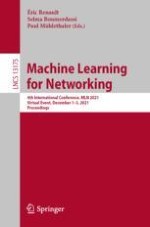This book constitutes the thoroughly refereed proceedings of the 4th International Conference on Machine Learning for Networking, MLN 2021, held in Paris, France, in December 2021. The 10 revised full papers included in the volume were carefully reviewed and selected from 30 submissions. They present and discuss new trends in in deep and reinforcement learning, pattern recognition and classification for networks, machine learning for network slicing optimization, 5G systems, user behavior prediction, multimedia, IoT, security and protection, optimization and new innovative machine learning methods, performance analysis of machine learning algorithms, experimental evaluations of machine learning, data mining in heterogeneous networks, distributed and decentralized machine learning algorithms, intelligent cloud-support communications, resource allocation, energy-aware communications, software-defined networks, cooperative networks, positioning and navigation systems, wireless communications, wireless sensor networks, and underwater sensor networks.
